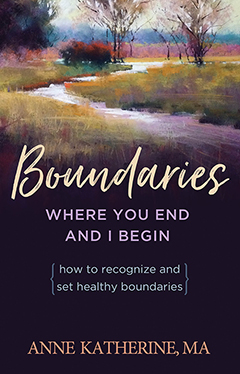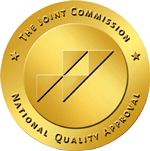
"While you shut others out, you shut yourself in."

Other titles you may like.
Visit Recovery Road to view and listen to all the episodes.
Episode 34 -- August 10, 2020
Fences: Boundaries Keep Us Safe from Ourselves
Much of what we have been focusing on from the start of this pandemic is how it affects us negatively. How social and physical distancing is hard for people in recovery, how stakes are higher, how life is literally in the bounds. And also, if we were to look at this from a dialectical behavioral standpoint with the "and" instead of the "but," it's giving us some time to stay in and focus on ourselves, our relationships, our lives, and our futures. We can work on being more aware of how we're feeling with mindfulness techniques, we can reach out and be of service to others.
We can also explore what has formed us--how we have become who we are today--and how that affects how we walk through this world and experience life and other people. Boundaries are one of the aspects of our selves that can take some examination. They help us understand where we end and others begin--in how we think of ourselves, make choices, keep ourselves safe, and keep our recovery central to our lives. In Boundaries: Where You End and I Begin by Anne Katherine, she tells us about how boundaries are particularly important for people with substance use disorders and compulsive thoughts and behaviors. This is a good time to do good work.
This excerpt is from Boundaries by Anne Katherine and has been edited for brevity.
A compulsion or addiction keeps others at a distance. When you're lost in your drug, it's easy to shut out the demands of others. Shopping or running or working compulsively puts a nice canyon between you and your would-be intimates.
While you shut others out, you shut yourself in. Addictions and compulsions isolate you. They keep you from living and growing, from intimacy, and from confronting your issues and connecting with your life's purposes.
If you have children, the distance created by addictions and compulsions translates into neglect and abandonment. Believe it or not, too much distance can also be a boundary violation. If you are remote, who's loving your children?
Effective recovery includes developing healthy, clean boundaries. Good boundaries strengthen recovery and provide additional insurance against relapse. If you can give yourself the separateness you need when you need it, you'll decrease your dependence on a compulsion to do it for you. As your sobriety increases, you may discover you need distance. We advance our sobriety when we face our issues and challenge our fear of intimacy. Good boundaries allow us to be close to others without losing ourselves.
I encourage you to attend to your boundary development and to get whatever help you need to live a sober or abstinent, conscious life.
Best of luck building good boundaries. This process requires continued attention and maintenance. Someday, perhaps, most of us will understand boundaries and be sensitive to interactions that cross boundaries. But until that happy time, even well-meaning people will continue to intrude on personal territory.
Good boundaries enable us to define ourselves. They enhance our physical and emotional health and promote recovery. Good boundaries yield healthy relationships.
True intimacy is possible only between two whole, distinct people who both have good boundaries. Enmeshment feels like intimacy but it's not. How can you be intimate with someone who blends into you? Intimacy grows as you become known by the other and as you know the other. If the other person's individuality shifts and fades, how can you know this person? If your sense of yourself is wobbly, how can you be known?
As your boundaries get clearer, you'll reap riches. If you know what you want, you can get it. If you know yourself, you can get involved in what's important to you. The friends who respect your limits are the friendships that will be strengthened. True intimacy with a special person becomes possible.
Robert Frost was right. Good fences do make good neighbors.
Let's look at two exercises to help us in Understanding the Basics of Boundaries.
For Exercise 1 start with some equipment. Find some twine or string at least 25 feet long.
First, in the middle of a room with lots of space, put the twine on the floor so that it makes a circle. Stand in the middle of the circle. Imagine that everything outside the circle is not you. Imagine that everything within the circle is you.
Next, think about what fills up your circle. What do you care about? What do you believe? What do you hate? What do you love? Who are you? What is attractive to you? What repels you? What do you value? What do you think about? What are you really like?
A million things make you distinct from everyone else. The more you know about these things, the firmer your self-concept will be. At this time, feel free to pause the podcast and write your answers to the questions. Later, if you'd like, you can discuss the questions and your answers with a friend.
For Exercise 2, you'll need magazines, large paper grocery bag, tape or glue as equipment.
First, from the magazines, cut or tear pictures or words that describe the external you, the you that is presented to the world.
Next, paste or tape the pictures or words on the outside of the bag.
Then, inside the bag, put the words or pictures that describe your inside self.
After you're done, compare the words and pictures inside the bag with those outside the bag. Have you described two different people?
Write down your answers and thoughts, or discuss your discoveries with a friend.
This is only the beginning of how to think about yourself and your boundaries. For more insight about where we end and others begin, read Boundaries by Anne Katherine.
About the Author:
Anne Katherine, MA, worked as a licensed therapist in a variety of settings for forty years before retiring in 2011. She has led many popular workshops, conferences, and retreats, and is the author of many books including Boundaries: Where You End and I Begin and Boundaries in an Overconnected World.
© 1991 by Hazelden Foundation
All rights reserved


